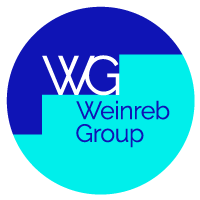Under the COVID-19 pandemic, an astonishing 20 million-plus Americans have applied for unemployment. This is an unreal time for everyone. As a recruiter, I have been thinking a lot about how the sustainable business community is coping with job loss, the threat of job loss and, for some, the confusion of trying to hire and plan during this unprecedented crisis.
It’s an understatement to say that we’re living in an age of uncertainty. For those of us working in corporate sustainability, one silver lining is that we’re comfortable with complexity and change, and our modus operandi is to plan for the long term.
I have written before about how to navigate volatility, uncertainty, complexity and ambiguity (or VUCA), and I found it helpful to review advice from Simon Pickard, former director for international programs at the Academy of Business in Society, now with the Science | Business network.
Pickard outlined three competencies needed in a VUCA world. The first is an appreciation for context, or an ability to understand how things connect in the big picture. This can help us understand systemic challenges and opportunities. The second is comfort with complexity, which helps us apply flexibility and resourcefulness to complex challenges. The third is the ability to cultivate connections within and outside the company to enlist the ideas and best practices of others to solve complex challenges.
This crisis is a shared experience, and we can learn best from it if we connect with others and share our knowledge.
From a sustainability recruiter’s perspective, I see these three areas that deserve attention right now:
Context: What does the big picture look like? How can managers support people whose jobs are more demanding right now?
To set the context, let’s look take at a broad view of industries and functions that are affected the most. Under the pandemic lockdown, it’s difficult to see so many industries suffer, particularly travel, retail and hospitality. Other industries are doing better: pharmaceuticals; tech; telecom; finance; and companies supporting shelter-in-place.
Homing in further, let’s take a look at the context of sustainability-related roles — some of which are more in demand right now, including environment, healthy and safety (EHS) and community affairs roles.
With a focus on these, it’s important to consider how sustainability teams as a whole can support these functions: For instance, people working in EHS are busy adapting to shifts in the understanding of a healthy and safe work environment. Community relations teams have an elevated role supporting the community. How can other sustainability functions be redeployed to support the increased demands on these roles?
Complexity: How can you think about planning and hiring when the future is unknown?
So many factors will go into the determination of when it’s safe to return to work and lift shelter-in-place rules. The best way to manage this kind of complexity is through scenario planning and consideration of what “the new normal” might look like.
Many companies are furloughing workers, including Gap, Macy’s, Disney and REI. Others are continuing to hire — Amazon, for example. Regardless of whether the company is actively hiring or freezing hiring, all companies can take this time to consider how it might be necessary to reconfigure teams, workstreams and internal partners.
At the Weinreb Group, we have continued to move forward with our clients, albeit with interviews moving over to Zoom or other digital platforms. There are advantages to hiring now. With a higher unemployment rate, the pool of candidates has grown, and employers have access to a stronger pool of candidates.
It’s also easier to connect, both as a job candidate and as an employer, under shelter-in-place conditions. We advise clients who are hiring to be sensitive to the job candidates’ needs right now and think about how they can incorporate flexibility into the hiring and onboarding process to ensure that new hires have the best support during these uncertain times.
Connection: How can you work with your team, and those in your field, to rethink the way work happens?
For every company, work looks very different right now. Scores of people are working from home, conferences are postponed and/or moved online, and teams are reprioritizing. This crisis is a shared experience, and we can learn best from it if we connect with others and share our knowledge.
As you adjust to this new world, take time to reflect with your team and others in your field: What is working better now? What do you want to continue in the future? What have you noticed about “non-essential work” that could be dropped? Now is a good time to connect and rethink the future of your work so you can take the best of what you learned and leave the rest behind post-pandemic.
I hope you all are taking good care of yourselves and your teams, and that these tips help your focus if you are able to work right now. Yet to come, I’ll be connecting with my network to understand how this crisis is affecting their work so that together we can understand the current state and plan a sustainable future.
